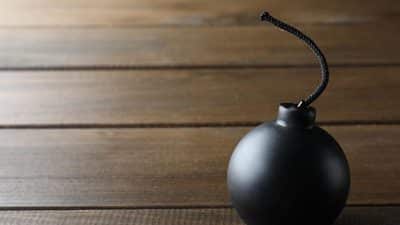Golf Things Considered column by John Rogers
[email protected]
Until Tiger came on the scene, Jack Nicklaus was widely considered to be the best putter of all time, at least in terms of making a putt when it’s needed the most. Nicklaus’ unique crouching stance and his stroke make one thing clear about putting – it’s not just about having “textbook” mechanics. No doubt Nicklaus’ putting stroke managed to satisfy the laws of physics, or he would not have dropped so many putts during his incredible career; but what set Jack apart was his ability to make a great stroke despite the gremlins of fear and all the other demons that whisper in our ears when we pick up the flat stick.
Having said that, people who don’t wield the putter like the tool of a cold-blooded killer, who aren’t hard-wired with a demeanor as aloof as my laptop – in other words, those of us who aren’t Jack or Tiger – do well to develop solid putting mechanics.
The problem is that there is a bewildering set of options and choices; there are great instructors teaching different methods; there are at least three different categories of putters when it comes to the length of the club; there are a million different ways to grip the club, with names like reverse overlap and The Claw, and postures to choose from; and club designs – everything from a subtle, old-fashioned blade to these recent gargantuan potato mashers that would probably pick up 135 channels if you stuck it in your roof.
How can there be anything absolute in the tangled jungle of putting relativism? How do we know what’s the right thing to do when there are so many options?
For instance, in recent years, great players and their coaches have generally talked about “releasing” the putter. This means they let the putter swing in a soft little arc through the ball, the clubface opening slightly as the club goes back, closing slightly in the follow-through like a miniature swinging gate. This is different from the traditional concept of swinging the putter on a straight line, ideally keeping the face square to the target line at all times. Which way is the right way?
From my perspective, the way to sort out all these chaotic variables is the same whether we’re talking about putting, chipping, pitching or full swings. First of all, there are a few things that are certain: it sounds silly, but a good putt is one that goes in the hole; to go in the hole, a ball must travel a path with a good combination of direction and speed. So, for a golfer to be a good putter, he must consistently stroke the ball with a good combination of direction and speed. That’s the absolute part of putting: A good putt is one that goes in the hole, and a good putter is someone who manipulates the direction and speed of a ball to make it go in the hole.
The rest is not as important. I have told my students in the past that I don’t care if they stand on their heads as long as they make putts. One of the secrets of good putting is to keep mental focus on the absolute goal, to make the putt, without letting the method be a distraction. Good putters tend to have a mindset of where, not how.
But that doesn’t help us sort out all the other variables: the different grips, setups, clubs and styles. These things are the relative part of putting, meaning they can be different for different golfers.
Here’s what I think about the relative parts of golf (no matter what kind of golf shot we’re talking about): The relative parts of the swing will help you achieve success in the absolute parts when they (the relative parts) fit together. Say what?
Imagine we color-coded various pieces of putting. A tall putter is red, a belly-putter is white, and a traditional putter is blue. A reverse-overlap grip is blue, the claw is white, left-hand low is green. An average posture is white, upright is red, bent-over is blue. Pushing the putter through impact is yellow, pulling it through is green, and swinging the putter from the shoulders is blue. Releasing the putter is white, whereas a square-to-square stroke is might be either red or blue. And so on.
From a mechanical standpoint, golfers tend to struggle if they mix too many colors. They take a posture that doesn’t fit with their method of swinging, which doesn’t fit their grip, which doesn’t fit their putter, which doesn’t fit the kind of greens they play on. The trick is to make the pieces fit together, usually with the guidance of a teaching professional.
People tend to putt more like Jack and Tiger when they putt more like Jack and Tiger. They stay focused on the absolute goal – to make the putt. They make all the other, less important, pieces fit together like a complete set of tools to help them achieve the goal. And they spend countless hours on the practice green getting the repetitions that build feel and confidence.










